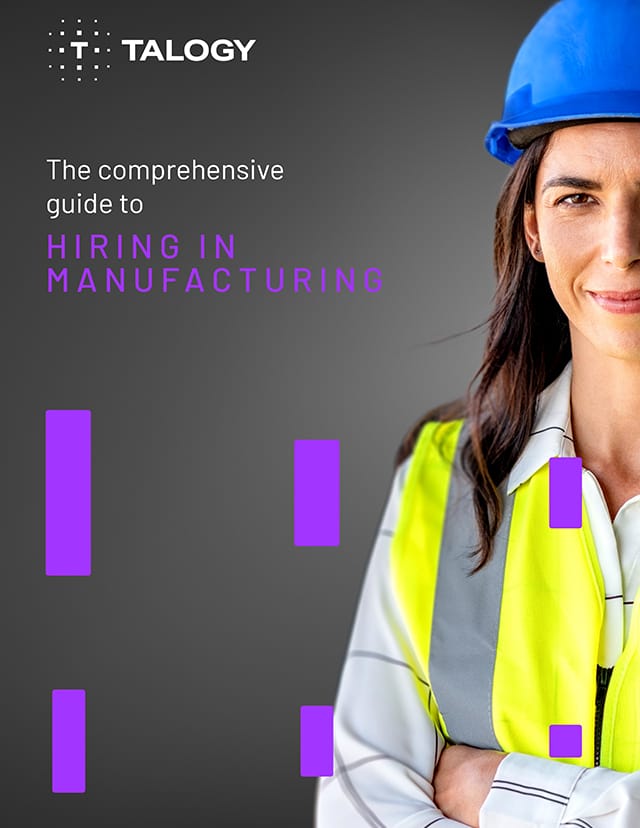Written by John Mirtich, Vice President of Strategic Solutions
Wouldn’t it be great if we had a crystal ball that told us what changes are on the horizon for our businesses so that we could plan ahead accordingly? While the reality of that has yet to be realized, that doesn’t remove the importance of planning for what we think will happen in the coming months and years. That’s where workforce planning comes into play. 61% of board of directors surveyed rated workforce planning as important or extremely important. But what is workforce planning exactly and what benefits does your organization stand to gain from its implementation?
What is workforce planning and why does it matter?
Imagine trying to run a business without knowing how many employees you’ll need next year or even next month. That’s where workforce planning comes in. But what is workforce planning? Simply put, it’s the process of ensuring a company has the right people with the right skills at the right time to meet its goals. It’s a proactive approach that helps businesses anticipate staffing needs, address skill gaps, and align their workforce with long-term objectives. Without effective workforce planning, businesses may find themselves understaffed during peak seasons or overspending on unnecessary roles. By taking a strategic approach, companies can optimize hiring, reduce turnover, and ensure their teams are equipped to handle future demands.
Workforce planning isn’t just about filling positions, it’s about building a resilient and agile team that can drive business forward. And with AI revolutionizing the way companies plan for the future, organizations that embrace these advancements will stay ahead in an increasingly competitive landscape.
4 challenges of traditional workforce planning
Traditional workforce planning often relies on manual forecasting, which can be time-consuming and prone to errors. Some of the common issues that organizations have faced when employing that traditional approach to workforce planning include:
- Unpredictable demand: Sudden shifts in staffing needs can lead to understaffing or excessive labor costs. Nowadays, the labor market is constantly shifting, and these staffing challenges translate to real dollars that can impact an organization’s bottom line.
- Inefficient manual scheduling: Relying on spreadsheets and outdated workforce planning tools increases the likelihood of errors and unnecessary expenses. I for one love a good spreadsheet and the level of organization that it can bring to any process, but the need to constantly update it and hope that everything in my brain translates accurately to each cell does leave quite a bit of room for error.
- Regulatory compliance risks: Labor laws, union agreements, and fair scheduling policies add layers that complicate being able to effectively workforce plan. Each adds a level of complexity to ensure that all guidelines are being met when it comes to standard procedures like shift assignments, time off, and overtime.
- Employee retention concerns: Inconsistent scheduling and poor workforce planning can lead to burnout and high turnover rates, particularly in fields where employees are required to regularly switch the shift that they work. In these roles, any level of inconsistency is an immediate stressor to an employee’s routine and can negatively impact their responsibilities outside of work.
How AI in workforce planning benefits organizations
Organizations utilizing AI workforce planning can now analyze data in real-time to better predict staffing needs with greater accuracy which enables them to better adapt to those inevitable market shifts, identify talent gaps, and enhance recruitment processes.
Some benefits of using AI in workforce planning include:
- Up to a 30% reduction in employee downtime due to optimized workforce allocation. A report from McKinsey tracked a utility service center that was able to optimize their scheduling procedures, better identify the best crews to send when emergency repairs came up, and limit the number of jobs being started prematurely due to lack of staffing or infrastructure.
- Improved compliance tracking, reducing scheduling-related errors and regulatory risks. There are so many rules and regulations to keep up with, and particularly with a globally dispersed workforce, laws vary depending on country and municipality. Employing AI in workforce planning can help your organization cut down drastically on the amount of time spent juggling all of these legalities.
- Better culture and overall workplace environment due to adequate staffing across departments. By showing that you’re invested in efficient workforce planning, you reduce the risk of employee burnout that comes with an overworked staff. You also demonstrate that their well-being is a priority, which positively impacts your organization’s culture and reduces the cost of hiring and re-hiring.
The role of data-driven talent assessments in workforce planning
Automation streamlines scheduling and boosts organizational efficiency, but the foundation of this entire process is selecting and developing the right people within your organization which still requires human insight. Science-backed hiring models based on the results of a job analysis help organizations make data-informed hiring decisions, identify high potential employees, and build a pipeline of future leaders.
By integrating talent assessments with automated and AI workforce planning, companies can ensure employees are matched to roles that align with their skills and motivations as well as business objectives.
The future of AI in manufacturing
Manufacturing is one of the industries seeing the biggest transformation from automation and AI-driven systems. For manufacturers, integrating AI into their workforce planning practices improves their decision-making and allows them to remain agile in a changing industry. Some of the competitive advantages and benefits from these key changes include:
- Improved efficiency and production output, with more predictive maintenance windows, reducing downtime and enhancing overall operations.
- Smarter workforce allocation, ensuring real-time automated shift planning for workforce efficiency and that automation supports workers rather than replaces them. Instead of managers having to manually adjust schedules, AI-powered solutions can instantly allocate shifts based on employee availability, workload demands, and business needs.
- An opportunity for reskilling, as employees transition from repetitive tasks to roles overseeing automation and advanced machinery. This allows you to put employee development at the forefront of priorities in a way that benefits both your workforce and the organization as a whole.
- Enhanced workplace safety, with AI-driven monitoring that can reduce hazards and ensure compliance with industry regulations.
Looking ahead, manufacturing will continue evolving alongside automation and AI in talent management processes. Rather than replacing human workers, automation gives companies a unique opportunity to optimize their labor practices in a way that wasn’t possible even a few years ago. Organizations that proactively work to blend automation with their workforce planning tools will be best positioned to reap the benefits for years to come.
The future of workforce planning
The landscape of workforce planning is in flux, with automation helping today’s organizations improve efficiency and adaptability. However, human expertise remains a critical element to ensure that data-driven assessments and predictive analytics align with business needs and long-term strategies. So, organizations that effectively combine automation and AI with strategic workforce planning will be prepared to handle not only the difficulties of today, but also the challenges that lie ahead.
About the author: John Mirtich, M.A. champions and supports client partnerships. He helps move along a project providing guidance and resources to ensure its smooth execution and accomplishment. He uses his influence and expertise to remove obstacles, secure necessary funding, and align the project’s objectives with the organization’s overall vision. Ultimately, with a direct line to department executives, he ensures that the project is strategically aligned, well-resourced, and fully supported at every stage.




